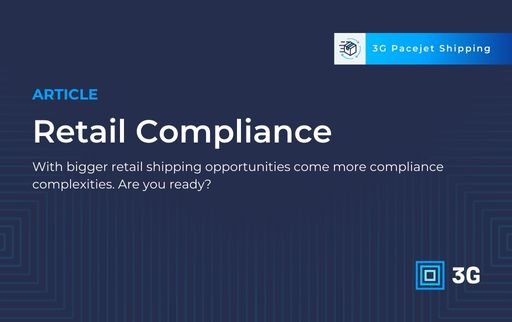Blog
With bigger retail shipping opportunities come more compliance complexities. Are you ready?

As your business grows, you start working with larger trading partners, and more of them. Pretty soon, the processes that worked to ship products direct-to-consumer, or small retail outlets simply cannot handle the volume or complexity. Welcome to the world of retail compliance.
Every large trading partner has its own requirements, none are exactly the same, but they all have one thing in common: serious consequences for falling outside of them. If you want to do business with Walmart, Amazon, Home Depot, or Target, it’s time to not only get serious about retail compliance, but also figure out how to automate away some of the complexities and repetitive tasks of maintaining it.
GS1/UCC128 Labels
Labeling your shipments to large retailers is anything but simple. Each shipping label will likely be affixed to a carton, pallet, or other multi-layer packing container with multiple products inside. That label must allow the recipient (retailer) to know exactly what’s inside and match both the format specified by that particular retailer and the enclosed packing slip. Welcome to the world of GS1/UCC128 labels, with barcodes and printing that must be absolutely error-free in order to avoid chargebacks or nonacceptance. And of course, this varies from retailer to retailer, and is very difficult to do at scale without dedicated tools.
Branded Packing Slips
With certain items, retailers will have manufacturers or distributors dropship to end customers. However, when doing so, it must still appear to have originated with the retailer. As the shipper, you will need to include a packing slip that matches your customer’s (retailer) branding and formatting. Especially when shipping on behalf of multiple retail customers, it is essential to match the right slip to the right package. If unautomated, this becomes a painstaking process.
Advance Shipment Notifications
It isn’t enough to just get the paperwork right: retailers want to know not only exactly what they are receiving, but precisely when it will arrive. These Advance Shipment Notifications (ASN) are generally transmitted via Electronic Data Interchange (EDI), the retail industry’s preferred method. Once again, each retailer has its own specific format for the information within the ASN and will only accept shipments for which corresponding ASN have been received. Fortunately, there is software available specifically for using EDI, but it must also be connected to other systems, too.
So, what’s next?
Becoming an omnichannel seller, or working with larger retailers, is an important aspect of growth and diversification. Major retailers mark one of the largest distribution channels a manufacturer or wholesaler can have, and their orders tend to be larger than those placed by smaller outlets or consumers. But moving in this direction comes with uncertainties of its own, such as becoming, and remaining, compliant. Fortunately, with add-on features such as Label Connector, Retail Packing List, and Compliance Library, along with our SPS Commerce EDI integration, we’ll have you prepared for the next phase and beyond.
Watch the on-demand panel discussion
Access the recording to hear from Pacejet, Acumatica, and SPS Commerce as we dive into the world of retail compliance and share how you can prepare for what’s next with comprehensive retail compliance.







